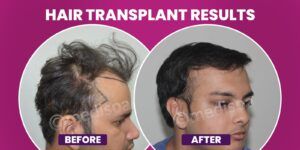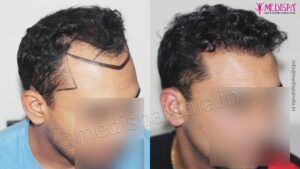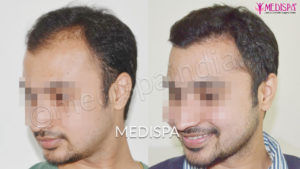
Hair loss is more widespread these days because of evolving lifestyles and a worsening environment. Hair transplants are used by both men and women who suffer hair loss on their scalps or in other parts of their faces, such the beard, moustache, or even the eyebrows. Some patients choose hair transplantation in order to change their hairline because they are dissatisfied with the hairline or hair density. A hair transplant is an elective procedure that is available to anyone at any stage of baldness. The surgeon carefully assesses and investigates the hair loss problem before deciding who should get a hair transplant.
Hair transplant in Delhi has become quite well-liked since everyone wants outcomes that are long-lasting and realistic-looking. One of the world’s top hair transplant surgeons, Dr. Suneet Soni, practices in Delhi. He comes in first place on the list of the best surgeons across the country. He is one of the most qualified and experienced hair transplant surgeons, having performed more than 10,000 hair transplants.
What is hair transplant?
A hair transplant is a minimally invasive surgical treatment used to treat hair loss. A permanent hair growth after surgery may occur as a result of the healing process. The procedure involves carefully extracting DHT-resistant or permanent hair follicles from donor locations, and then transplanting those hair follicles to the target bald site to cover the bald patch. The entire course of therapy must take place in a clean, secure medical clinic. Individual hair grafts are normally extracted using one of the two FUT extraction techniques, the strip technique, or the FUE technique.
The quality or cosmetic results of hair transplant treatments in the distant past deteriorated as a result of their crudeness. But with today’s tools and technology, it’s possible to get the most natural-looking results for hair transplants. All you want is a skilled surgeon with understanding of this technique. It should go without saying that a hair transplant is a drawn-out procedure, with results appearing 6 to 8 months following the procedure. The post-operative time is crucial to assuring better results because of this.
Healing after hair transplant?
Following the hair transplant procedure, the donor area’s physical healing would take 7 to 10 days. Today, you could have less side effects. These negative effects include a little tingling, a little pain, a little itching, and a little swelling. The side effects are not at all troublesome. They might last for around a week.
You must strictly adhere to a few aftercare instructions given by the experts after having a hair transplant.
What about post-procedure hair growth?
After a hair transplant, new hair grows in permanently and looks remarkably natural. Yes, the hair roots that are implanted during a hair transplant go through a rest phase. After the period of rest is over, hair growth likely begins two months after the procedure. After about three months following the procedure, you can see visible hair growth. In about 5 to 6 months after a hair transplant, a decent amount of hair growth can be observed. You will need to wait around a year after the procedure is completed to see the full hair growth.
Does it scar after a hair transplant?
After the hair transplant procedure, the donor area develops scars. A good surgeon will ensure that there are few, almost invisible scars. Linear scarring that is almost unnoticeable is typical following a FUT hair transplant. Additionally, a FUE hair transplant leaves circular scarring in the donor area. Surgery scars in the form of practically imperceptible circular dots may appear if the procedure is performed by experienced hands. The surgeon’s participation is crucial in achieving minimum scarring at the donor site.
Feedback of the procedure
According to a broad study, the best treatment for persistent baldness has been thought to be a hair transplant up until now. People are driven to choose hair transplant surgery as a treatment option for their permanent hair loss because the results after the procedure are permanent and appear completely natural. The hair roots planted during the hair transplant process do not require upkeep after the procedure; instead, they grow just like your natural hairs do.
If you choose the correct clinic and doctor for the surgery, the feedback on the treatment is outstanding. Yes, a successful hair transplant depends on picking the right clinic and surgeon.





